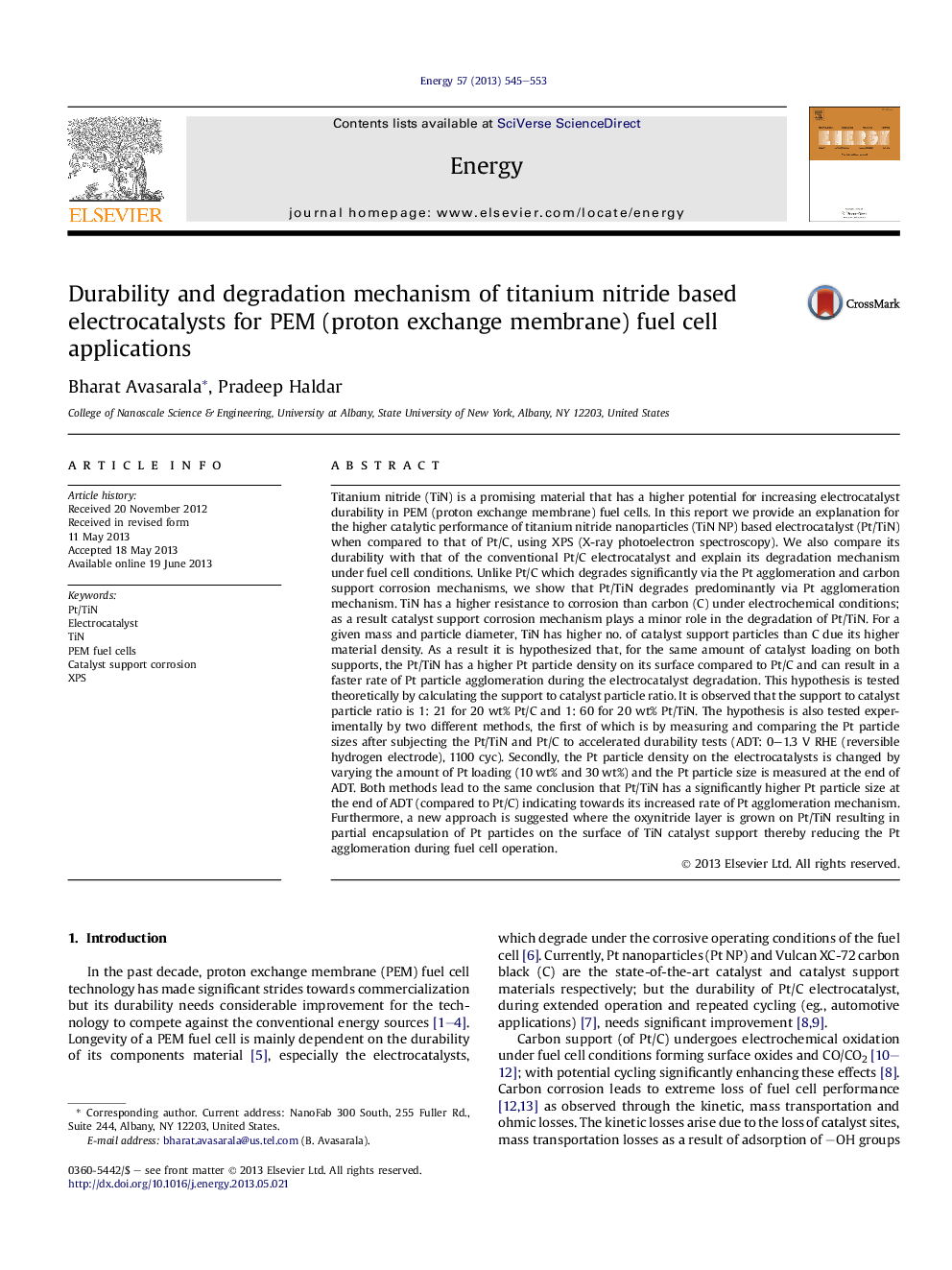| کد مقاله | کد نشریه | سال انتشار | مقاله انگلیسی | نسخه تمام متن |
|---|---|---|---|---|
| 1733097 | 1521489 | 2013 | 9 صفحه PDF | دانلود رایگان |

• Carbon based electrocatalyst undergo degradation severely affecting PEM fuel cell durability.
• Corrosion resistant titanium nitride nanoparticles can replace carbon as a catalyst support.
• Synthesized Pt/TiN shows higher catalytic performance compared to commercial Pt/C.
• Unlike Pt/C, Pt/TiN degrades predominantly via Pt agglomeration.
Titanium nitride (TiN) is a promising material that has a higher potential for increasing electrocatalyst durability in PEM (proton exchange membrane) fuel cells. In this report we provide an explanation for the higher catalytic performance of titanium nitride nanoparticles (TiN NP) based electrocatalyst (Pt/TiN) when compared to that of Pt/C, using XPS (X-ray photoelectron spectroscopy). We also compare its durability with that of the conventional Pt/C electrocatalyst and explain its degradation mechanism under fuel cell conditions. Unlike Pt/C which degrades significantly via the Pt agglomeration and carbon support corrosion mechanisms, we show that Pt/TiN degrades predominantly via Pt agglomeration mechanism. TiN has a higher resistance to corrosion than carbon (C) under electrochemical conditions; as a result catalyst support corrosion mechanism plays a minor role in the degradation of Pt/TiN. For a given mass and particle diameter, TiN has higher no. of catalyst support particles than C due its higher material density. As a result it is hypothesized that, for the same amount of catalyst loading on both supports, the Pt/TiN has a higher Pt particle density on its surface compared to Pt/C and can result in a faster rate of Pt particle agglomeration during the electrocatalyst degradation. This hypothesis is tested theoretically by calculating the support to catalyst particle ratio. It is observed that the support to catalyst particle ratio is 1: 21 for 20 wt% Pt/C and 1: 60 for 20 wt% Pt/TiN. The hypothesis is also tested experimentally by two different methods, the first of which is by measuring and comparing the Pt particle sizes after subjecting the Pt/TiN and Pt/C to accelerated durability tests (ADT: 0–1.3 V RHE (reversible hydrogen electrode), 1100 cyc). Secondly, the Pt particle density on the electrocatalysts is changed by varying the amount of Pt loading (10 wt% and 30 wt%) and the Pt particle size is measured at the end of ADT. Both methods lead to the same conclusion that Pt/TiN has a significantly higher Pt particle size at the end of ADT (compared to Pt/C) indicating towards its increased rate of Pt agglomeration mechanism. Furthermore, a new approach is suggested where the oxynitride layer is grown on Pt/TiN resulting in partial encapsulation of Pt particles on the surface of TiN catalyst support thereby reducing the Pt agglomeration during fuel cell operation.
Journal: Energy - Volume 57, 1 August 2013, Pages 545–553